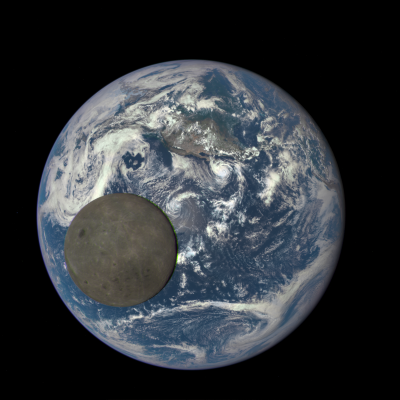ST. GEORGE — In January, a Chinese lunar lander touched down on the far side of the moon, a region never fully explored by man or machine, and its most recent discovery is strange, to say the least.

Launched in December, China’s Chang’e-4 mission rover was the first to land on the far side of the moon after its successful touchdown in January. The landing has been deemed a major technical feat and an important step towards China’s wider aspirations in space.
When Chang’e 4 landed on the Von Kármán crater, which is about 110 miles in diameter, on the far side of the moon, it was the first time a probe successfully landed on the so-called dark side of the moon.
Over the course of its mission, the rover has discovered minerals which may have come from deep beneath the lunar surface, among other materials and data.
Now, it has made an even stranger discovery – an oddly-colored, unknown “gel-like” substance, According to Our Space, a Chinese publication dedicated to space exploration.
In addition to the Chang’e 4 lander, a smaller rover called Yutu-2 was also deployed. It was this rover that stumbled across the gel unexpectedly as it traversed over the lunar crater.
While the Chinese government hasn’t released many details describing what the gel substance looks like, its odd color is what made it stand out against the lunar surface making it easier to detect.

Outside researchers have suggested that the gel is “melt glass” that has been created from meteorites hitting the far side of Earth’s natural satellite, according to Space.com.
The Chang’e 4 mission’s primary objective was to study the geology of the moon’s South Pole, known as the Aitken Basin. The basin is a vast impact region in the southern hemisphere measuring roughly 1,500 miles in diameter and five miles deep – it is the single-largest impact basin on the moon, and one of the largest in the Solar System, according to NASA.
During the year-long mission, scientists focused on measuring materials found on the lunar surface and tracking lunar temperatures for the duration of the mission, making efforts to create a miniature biosphere. To do so, the lander’s payload included six live species from Earth, including cotton, rapeseed, fruit fly larvae, yeast, a flowering plant and potatoes.
The sprouting cottonseed on China’s Chang’e 4 lunar lander was the first plant ever to germinate on another world.
The organisms were kept in a sealed chamber, protected from the extreme temperatures and intense radiation on the moon’s surface to create the mini-ecosystem, with plants producing oxygen and food to sustain the fruit flies.
Dark side of the moon
The “man in the moon” first appeared when meteoroids struck the Earth-facing side of the moon, creating large flat seas of basalt that we see as dark areas called maria. But no “face” exists on far side of the moon, and since the far side is never seen from earth, it has been a mystery.

This mystery is called the Lunar Farside Highlands Problem and dates back to 1959 when the Soviet spacecraft Luna 3 transmitted the first images of the “dark” side of the moon back to Earth. It was called the dark side because it was unknown, not because sunlight does not reach it.
The moon is tidally locked to earth, meaning it exerts tidal forces strong enough to cause the moon to only show one side as it orbits. A lunar day equals 14 days on Earth. A lunar night is the same length and is brutally cold.
It is generally accepted that the moon was formed shortly after the Earth, about 4 billion years ago, NASA says. It was formed when a Mars-sized object hit Earth with a massive impact that ripped the outer crust from the Earth and flung it into space. Some of the particles orbited around the planet while others vaporized, which over time, created a disc of magma and vapor around the planet that eventually merged to form the moon.
The moon was 10- 20 times closer to Earth than it is now, and researchers found that it quickly assumed a tidally locked position, the “same real estate on the moon has probably always faced the Earth ever since,” Penn State News said.
The heat emanating from Earth also heated the near-side of the moon, making the outer surface softer with less density. The far-side, on the other hand, formed a thicker crust with cooler temperatures, which in turn created valleys, craters and highlands, but almost no lunar maria, or dark-shaded areas.
This phenomenon can be seen in the first images taken of the far side in 1959 by the Soviet Luna 3, and in additional images captured by NASA in 2015 using the Deep Space Climate Observatory satellite which captured a view of the fully-illuminated far side.
With its special environment and complex geological history, the far side of the moon is considered an ideal location for scientific and space exploration.
Copyright St. George News, SaintGeorgeUtah.com LLC, 2019, all rights reserved.